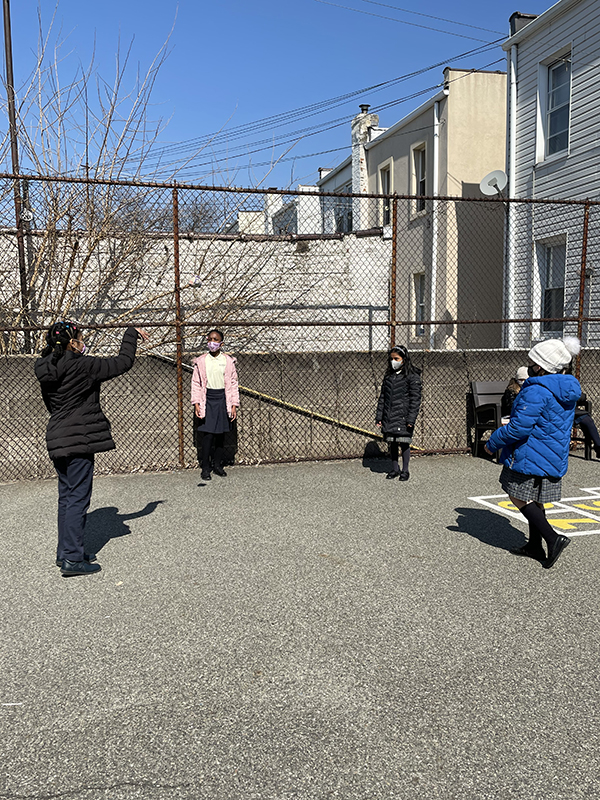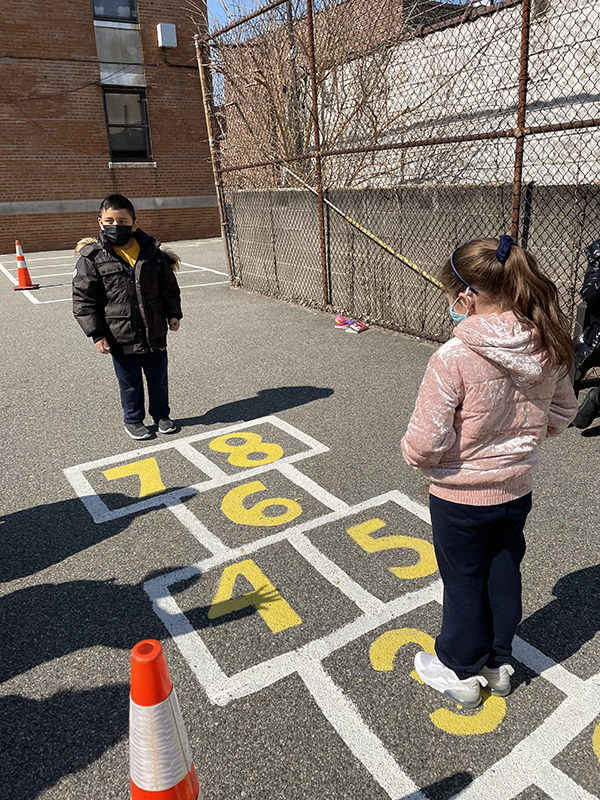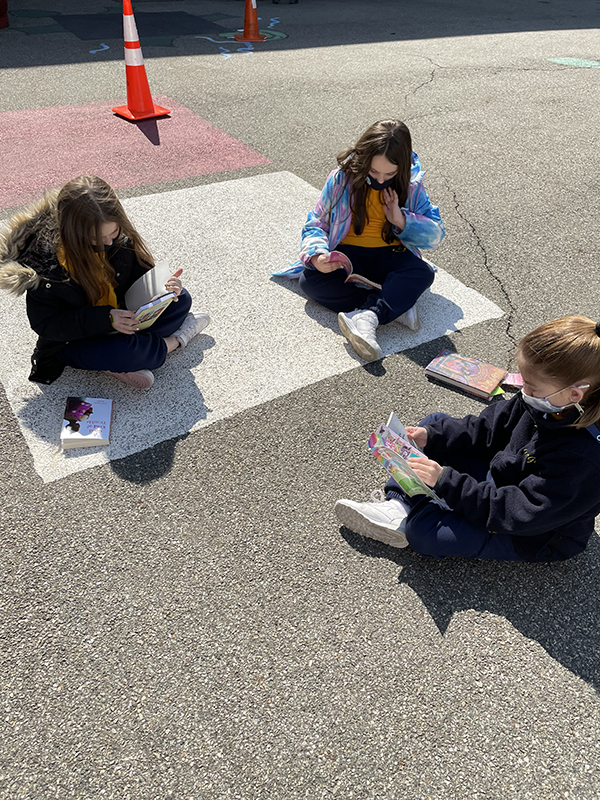
Our Lady of Grace Catholic Academy adjusts recess rules so students ‘get to be kids again’
WINDSOR TERRACE — Recess is a chance for kids to be themselves: get up from behind the school desk, meet up with friends from other classes, and put their high energy to good use. But this school year, playground time looks a lot more like an office coffee break for young ones in Catholic schools throughout the Diocese of Brooklyn.
“You [usually] could see a full basketball game — halfcourt — going on, with whoever wanted to play,” said Kelly Wolf, principal of Our Lady of Grace Catholic Academy in Gravesend, Brooklyn. But due to the social distancing protocols of the pandemic, “balls are not being used,” she explained. During recess, the usual sports equipment that students would share with one another is out of sight, swapped for a socially distant conversation instead.
There are no balls, no basketball hoops, and students eat lunch at their desks in the afternoon — all to maintain a social distance.
Also, students cannot enter or exit school grounds using the same doors during pick-up and drop-off hours. Instead, they enter the school by cohorts: early childhood students enter through one door, kindergarteners through fifth graders through a different set of doors and sixth through eighth graders enter via another.
“A mother who has three kids with me may have to go to three different entrances,” Wolf explained.
Our Lady of Grace students would usually be able to spend time with friends from other classrooms and grades, but now the playground gets divided during recess.
“You can only stay in the barrier section that you are assigned,” Wolf said. “Therefore … there is no intermingling with someone.”
Use of the school’s recreational areas is determined by cohort as well — on the playground, each group is further sectioned off by class.

Even though her students know wearing a mask is now part of their uniform and they’ve become experts in sanitizing throughout the school day, Wolf says there’s still one thing they’re working on accepting as a new normal, especially during playtime: social distancing.
“That’s the hardest thing kids are struggling with,” Wolf said. “It’s not that natural instinct to take that step back … that social half-hour to be a kid, there’s not true play going on.”
Instead of group games, recess has become their “coffee talk,” she explained. While students haven’t lost the social aspects of recess, in a way, they’ve lost their freedom.
“What I mean by ‘freedom’ [is] there were no barriers set up,” she explained.
Kelly noted the correct amount of space between themselves and a masked friend is not something children would necessarily know by instinct.
She and faculty members take time throughout the day to explain and demonstrate to students what proper boundaries and distancing look like during their “coffee talks,” including what she calls “the coffee clutch” — clutching your arms closer to yourself, instead of out towards someone else, as if holding a cup of hot coffee.
Even though the recess circumstances are not ideal for her students, the school’s outdoor facilities make some socializing outside of the classroom possible.

“At least they get to be kids again. You take them away from their computer; you take them away from their desk,” she said. “It’s just that downtime that they need.”
Keeping kids at play in New York City — especially one year into a global pandemic — is a must, according to Dr. Judith DeSena, a professor of sociology at St. John’s University.
“Both parks and playgrounds are very important for socializing in the city,” she said. “I can recall not so long ago that when we were locked down here in New York City, parents didn’t know what to do with their children.”
Considering the density and infrastructure of a metropolitan area, children have few outdoor recreational spaces outside of streets, sidewalks, and parks.
“So where do they go? Where can they get some fresh air and do the things that kids do?” DeSena asked. “It makes perfect sense to me that Catholic schools would be using their schoolyards.”
During a pandemic, “outdoors is probably the safest place that you can be,” she added. “You can talk about the huge structures that were built, like Central Park and Prospect Park, but frankly, I think it’s the more local parks and playgrounds that become more important for the everyday lives of people.”
